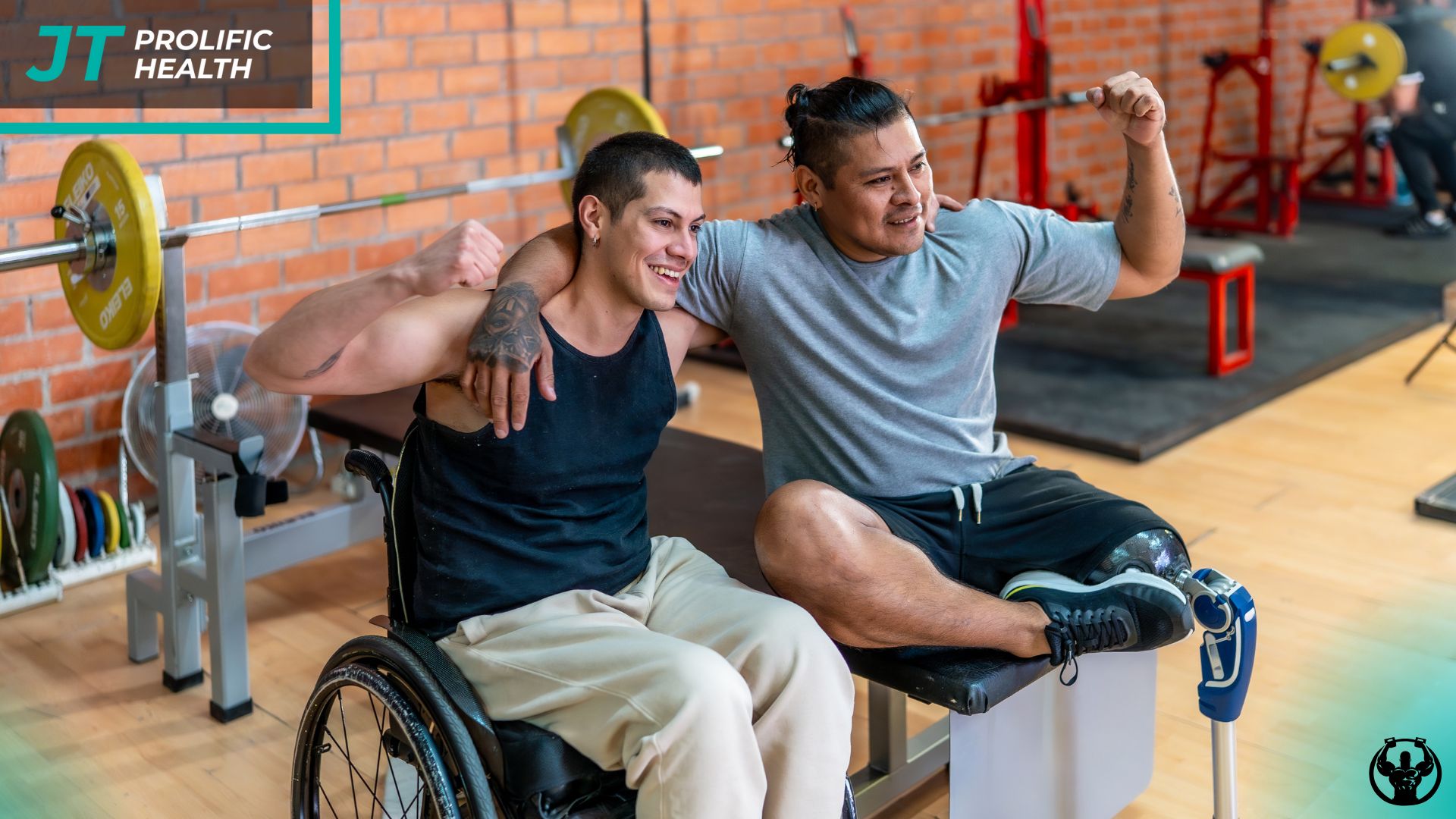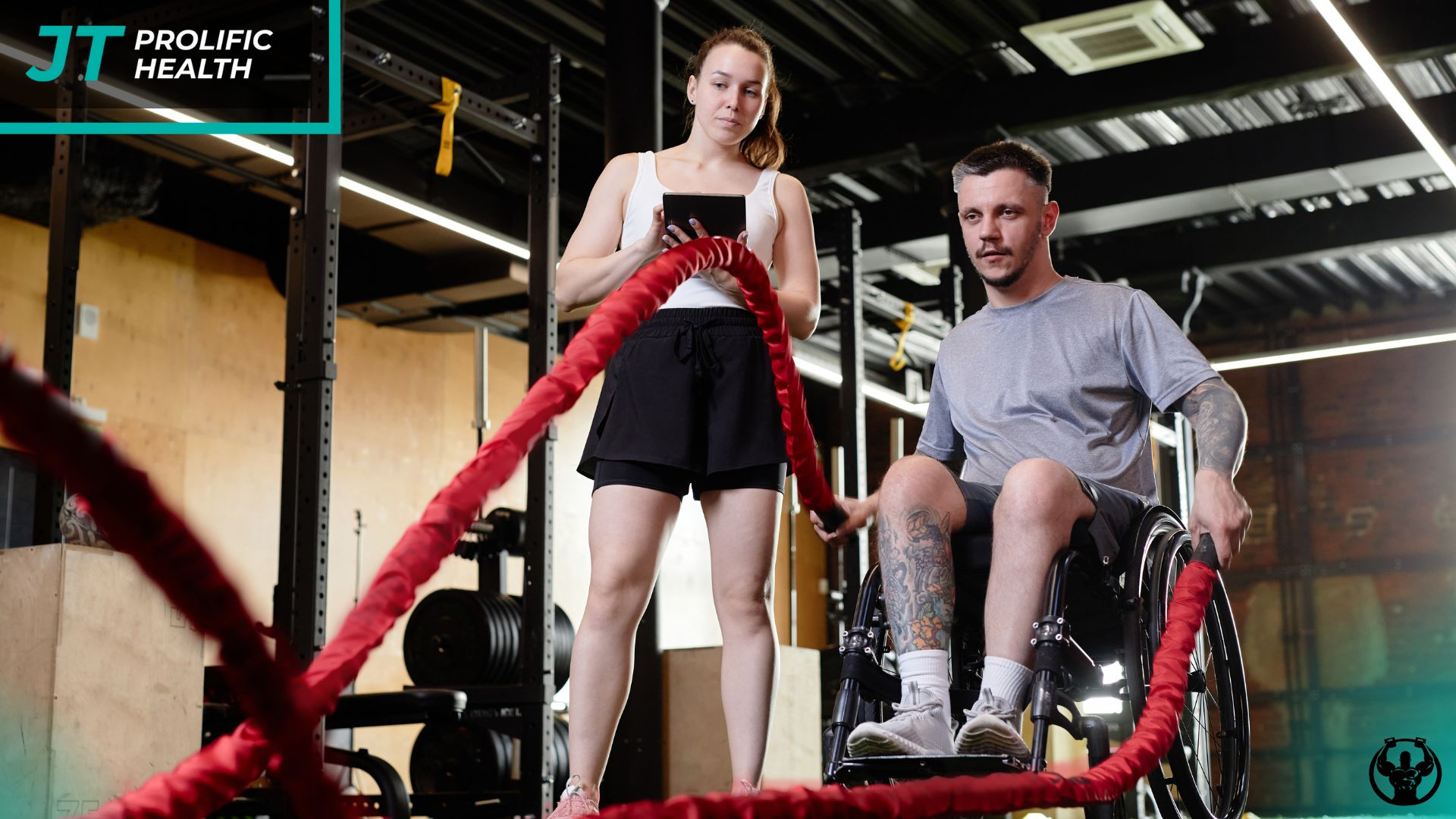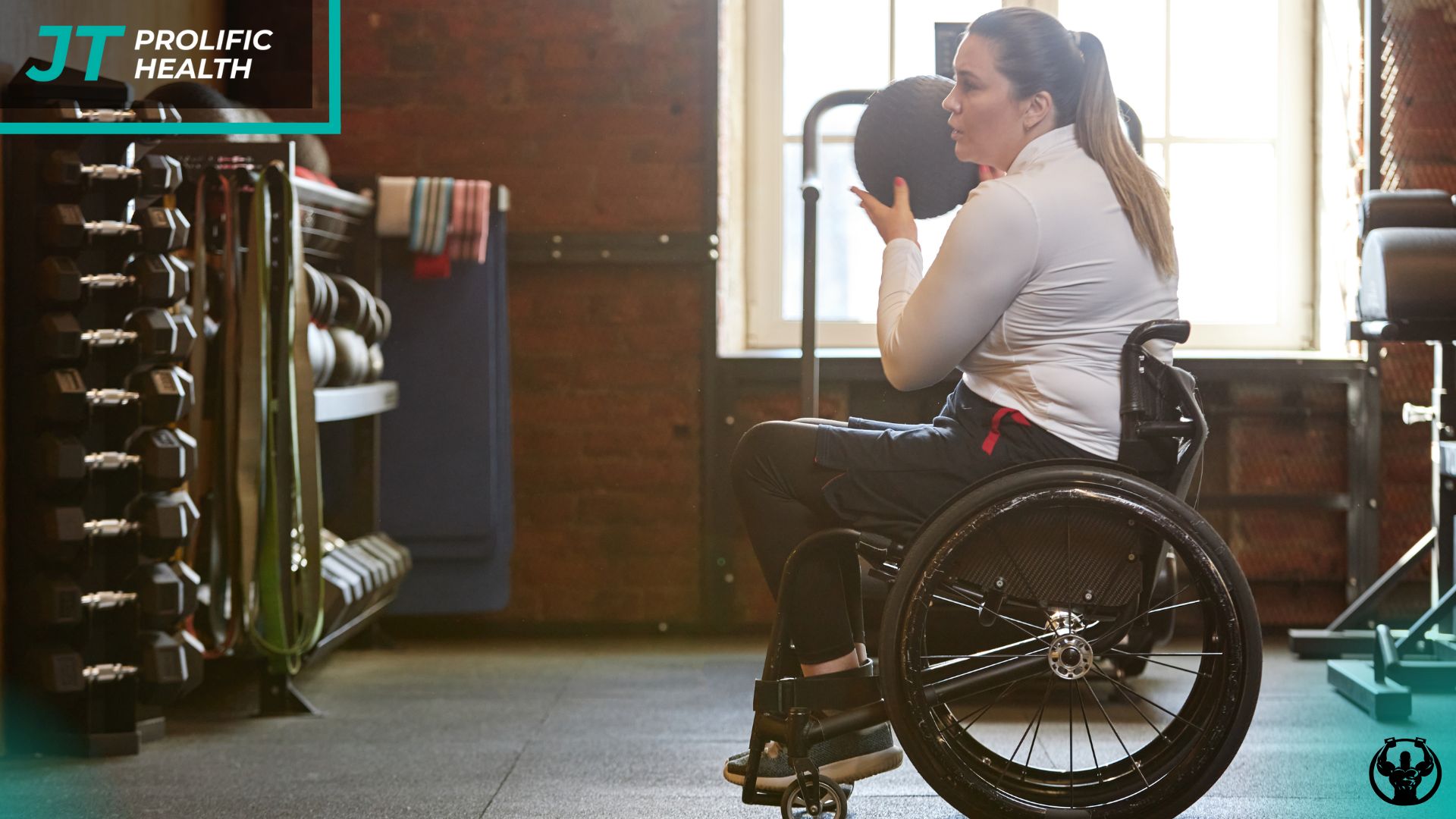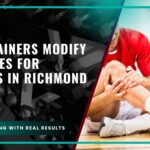Adaptive training for disabilities represents a revolutionary approach to fitness that recognizes the unique needs, capabilities, and goals of individuals with various physical, cognitive, and sensory impairments. In Richmond, BC, this specialized form of personal training has emerged as a cornerstone of inclusive fitness, breaking down barriers that have historically prevented people with disabilities from accessing comprehensive wellness programs.
The concept of adaptive training goes far beyond simply modifying existing exercises. It encompasses a holistic understanding of how different disabilities affect movement patterns, coordination, strength, and overall physical function. Professional trainers specializing in adaptive methods work closely with clients to develop personalized programs that not only accommodate their specific limitations but also maximize their potential for growth and achievement.
Richmond’s diverse community includes thousands of individuals living with disabilities, ranging from mobility impairments and amputations to neurological conditions like multiple sclerosis, cerebral palsy, and spinal cord injuries. Additionally, the city serves residents with sensory impairments, intellectual disabilities, and chronic conditions that affect their ability to participate in traditional fitness programs. Each of these conditions presents unique challenges that require specialized knowledge and adaptive techniques.
What makes adaptive training particularly powerful is its focus on ability rather than disability. Rather than dwelling on what clients cannot do, skilled trainers identify what they can accomplish and build upon those strengths. This approach has proven remarkably effective in helping individuals with disabilities achieve significant improvements in strength, cardiovascular health, flexibility, balance, and overall quality of life.
The growing recognition of adaptive training’s importance has led to increased availability of specialized programs throughout Richmond. These services are provided by trainers who have invested significant time and resources in understanding the complexities of various disabilities and learning evidence-based techniques for safe, effective adaptation of exercise protocols.
Key Takeaways
For additional context, see this comprehensive guide.
- Personalized Approach: Adaptive training is never one-size-fits-all. Each program is meticulously designed around the individual’s specific disability, functional capacity, medical considerations, and personal goals. This customization ensures maximum safety and effectiveness while promoting meaningful progress.
- Medical Integration: Successful adaptive training requires close collaboration with healthcare providers, including physicians, physiotherapists, and occupational therapists. This interdisciplinary approach ensures that exercise programs complement medical treatments and rehabilitation efforts.
- Specialized Equipment: Adaptive training often utilizes modified or specialized equipment designed to accommodate various disabilities. This includes wheelchair-accessible machines, resistance bands, stability aids, and assistive devices that enable safe participation in exercise activities.
- Progressive Development: Programs are structured to promote gradual improvement in strength, endurance, flexibility, and functional capacity. Trainers carefully monitor progress and adjust protocols to ensure continuous advancement while preventing injury or overexertion.
- Psychological Benefits: Beyond physical improvements, adaptive training provides significant mental health benefits, including increased confidence, reduced anxiety and depression, enhanced self-esteem, and improved social connections through group activities and community involvement.
- Functional Focus: Exercises are designed to improve daily living activities and functional independence. This practical approach helps clients perform everyday tasks more easily and maintain greater autonomy in their personal and professional lives.
- Community Integration: Many adaptive training programs in Richmond emphasize community participation and social interaction, helping individuals with disabilities build supportive networks and reduce isolation.
Understanding Adaptive Training Fundamentals

For additional context, see detailed information on this topic.
Adaptive training represents a paradigm shift in how the fitness industry approaches disability and exercise. At its core, this methodology recognizes that traditional exercise programs, designed for able-bodied individuals, often fail to address the unique physiological, biomechanical, and psychological needs of people with disabilities. Instead of forcing individuals to conform to standard protocols, adaptive training modifies exercises, equipment, and environments to maximize accessibility and effectiveness.
The foundation of adaptive training lies in comprehensive assessment and understanding of each client’s specific condition. This process begins with detailed evaluation of medical history, current functional capacity, range of motion, strength levels, cardiovascular health, and cognitive abilities. Trainers must also consider secondary conditions that often accompany primary disabilities, such as muscle spasticity, chronic pain, fatigue, or medication side effects that may impact exercise tolerance.
One of the most critical aspects of adaptive training is the recognition that disabilities exist on a spectrum. Two individuals with the same diagnosis may have vastly different functional abilities and limitations. For example, someone with a complete spinal cord injury at the T12 level will have different capabilities than someone with an incomplete injury at the C6 level. This variability requires trainers to possess deep knowledge of various conditions and their typical presentations while remaining flexible enough to address individual variations.
Safety considerations in adaptive training extend beyond typical exercise precautions. Trainers must understand potential complications such as autonomic dysreflexia in spinal cord injuries, seizure management for individuals with epilepsy, or blood sugar monitoring for diabetic clients. This medical awareness ensures that exercise programs enhance health rather than creating additional risks.
Types of Disabilities Served by Adaptive Training


For additional context, see our in-depth resource.
Adaptive training programs in Richmond serve individuals across the full spectrum of disabilities, each requiring specialized approaches and considerations. Physical disabilities represent one of the largest categories, including spinal cord injuries, amputations, muscular dystrophy, multiple sclerosis, cerebral palsy, and stroke survivors. Each condition presents unique challenges that adaptive trainers must understand and address through modified techniques and equipment.
Spinal cord injuries require particular expertise due to the complexity of paralysis and associated complications. Trainers working with paraplegic clients focus heavily on upper body strengthening, cardiovascular conditioning through arm ergometry, and transfer training. For quadriplegic individuals, programs may emphasize functional electrical stimulation, respiratory muscle training, and assisted range of motion exercises. Understanding the level and completeness of injury is crucial for developing safe and effective protocols.
Amputee training involves addressing both the physical challenges of limb loss and the psychological adjustment to prosthetic devices. Programs typically include balance training, gait modification, strengthening of compensatory muscle groups, and prosthetic integration exercises. Trainers must understand the different types of prosthetics and their limitations while helping clients maximize their functional potential.
Neurological conditions such as multiple sclerosis, Parkinson’s disease, and traumatic brain injury require adaptive approaches that account for progressive symptoms, fatigue management, and cognitive considerations. These programs often emphasize flexibility, balance training, and symptom-specific interventions. For individuals seeking support in building confidence through personalized training, adaptive programs provide structured environments where progress can be measured and celebrated.
Sensory impairments, including blindness and deafness, require environmental modifications and communication adaptations rather than exercise modifications. Trainers working with visually impaired clients must provide detailed verbal descriptions, ensure safe navigation of exercise spaces, and use tactile guidance techniques. For deaf or hard-of-hearing clients, visual communication methods and vibration-based feedback systems may be incorporated.
Intellectual and developmental disabilities require patience, clear communication, and simplified instruction methods. Programs for these clients often emphasize routine, repetition, and positive reinforcement while building basic motor skills and healthy lifestyle habits. The approach must be highly individualized based on cognitive capacity and communication abilities.
Adaptive Training Techniques and Methodologies


The implementation of adaptive training requires a sophisticated understanding of exercise modification principles and creative problem-solving skills. Successful adaptive trainers employ various techniques to overcome physical limitations while maintaining the physiological benefits of exercise. These methodologies range from simple equipment modifications to complex biomechanical adaptations that completely reimagine traditional exercises.
Range of motion exercises form the foundation of many adaptive programs, particularly for individuals with neurological conditions or mobility impairments. These exercises may be performed actively by the client, with assistance from the trainer, or passively when independent movement is not possible. The key is maintaining joint health and preventing contractures while gradually improving flexibility where possible.
Strength training adaptations often involve creative use of resistance bands, weights, and specialized equipment. For wheelchair users, exercises focus on functional movements like transfers, propulsion, and upper body strengthening. Trainers may use seated positions for traditionally standing exercises or modify grip positions to accommodate limited hand function. The principles of progressive overload still apply, but the progression may be slower and require more careful monitoring.
Cardiovascular training presents unique challenges in adaptive settings. Traditional cardio equipment may not be accessible, requiring alternative approaches such as arm ergometry, wheelchair racing, swimming, or seated aerobic routines. Trainers must understand how different disabilities affect cardiovascular response and adjust intensity accordingly. Heart rate monitoring may be complicated by medications or autonomic dysfunction, requiring alternative methods of intensity assessment.
Balance and coordination training takes on heightened importance for many individuals with disabilities. These exercises may involve static balance challenges, dynamic movement patterns, or proprioceptive training using unstable surfaces. For those learning to use prosthetics or mobility aids, balance training becomes integral to functional independence.
Functional training emphasizes movements that directly translate to daily activities. This might include transfer training for wheelchair users, gait training for amputees, or activities of daily living practice for stroke survivors. The goal is to improve real-world function rather than simply building strength or endurance in isolation. Many clients find that working with trainers who understand comprehensive lifestyle modifications helps them achieve better overall outcomes.
Benefits and Outcomes of Adaptive Training
The benefits of adaptive training extend far beyond simple physical improvements, encompassing psychological, social, and functional enhancements that significantly improve quality of life for individuals with disabilities. Research consistently demonstrates that well-designed adaptive exercise programs can produce remarkable outcomes across multiple domains of health and wellness.
Physical benefits include improved cardiovascular health, increased muscle strength and endurance, enhanced flexibility and range of motion, better balance and coordination, and reduced risk of secondary complications. For wheelchair users, upper body strengthening can prevent overuse injuries and improve propulsion efficiency. Individuals with neurological conditions often experience reduced spasticity, improved motor control, and slower disease progression through regular adaptive exercise.
Psychological benefits are equally significant and often serve as primary motivators for continued participation. Many clients report increased self-confidence, improved mood, reduced anxiety and depression, and enhanced sense of personal accomplishment. The goal-oriented nature of adaptive training provides structure and purpose that can be particularly valuable for individuals adjusting to acquired disabilities.
Social benefits emerge through group training sessions, adaptive sports participation, and community integration activities. Many clients develop lasting friendships and support networks through their training programs. This social connection helps combat isolation and provides motivation for continued participation in healthy activities.
Functional improvements directly impact daily living activities and independence levels. Clients often report easier transfers, improved mobility, reduced fatigue during daily tasks, and increased confidence in community participation. These functional gains translate to improved employment prospects, greater social participation, and enhanced overall life satisfaction.
Long-term health outcomes include reduced healthcare utilization, decreased risk of secondary conditions such as pressure sores or urinary tract infections, improved bone density, and better management of chronic conditions like diabetes or cardiovascular disease. The preventive aspects of adaptive training can significantly reduce healthcare costs and improve long-term prognosis.
For individuals seeking professional guidance, it’s important to work with trainers who have proper credentials and experience. Understanding what qualifications to look for in fitness professionals can help ensure safe and effective training experiences.
Finding Adaptive Training Services in Richmond BC
Richmond offers various options for adaptive training services, ranging from specialized disability fitness centers to mainstream gyms with adaptive programs. The key to finding appropriate services lies in understanding what to look for and asking the right questions when evaluating potential providers.
Specialized adaptive fitness centers typically offer the most comprehensive services, with staff specifically trained in disability-related exercise modifications and access to specialized equipment. These facilities often provide interdisciplinary teams including adaptive fitness specialists, physiotherapists, and recreational therapists working collaboratively to address client needs.
Many mainstream fitness facilities in Richmond have begun incorporating adaptive training services, recognizing the importance of inclusive programming. These facilities may offer modified group classes, one-on-one adaptive training sessions, or partnerships with disability organizations to provide specialized services.
Community centers and recreational facilities often provide adaptive programming at reduced costs, making services more accessible to individuals with limited financial resources. These programs may focus more on recreational activities and social interaction while still providing significant health benefits.
When evaluating potential providers, it’s crucial to assess trainer qualifications, facility accessibility, equipment availability, and program philosophy. The best adaptive training providers demonstrate genuine understanding of disability issues, maintain current certifications in adaptive fitness, and show evidence of ongoing education in the field.
Prolific Health recognizes the importance of inclusive fitness programming and works to ensure that all individuals, regardless of ability level, have access to quality personal training services. Their approach emphasizes individualized assessment, evidence-based program design, and collaborative care that addresses the whole person rather than just the disability.
Cost considerations vary significantly depending on the type and intensity of services required. Some programs may be covered by extended health benefits or disability funding programs, while others require private payment. It’s important to explore all funding options and discuss payment plans with potential providers.
Transportation and scheduling flexibility are practical considerations that can significantly impact program success. The best providers work with clients to address logistical barriers and ensure consistent participation in training programs. When researching options, individuals should also be aware of potential warning signs that might indicate inadequate training or inappropriate approaches to adaptive fitness.
Frequently Asked Questions
Q: Do I need a doctor’s clearance to start adaptive training?
A: Yes, medical clearance is typically required before beginning any adaptive training program. This ensures that exercise protocols are safe and appropriate for your specific condition and current health status.
Q: How much does adaptive training cost in Richmond?
A: Costs vary depending on the provider and type of service. Individual sessions may range from $60-120 per hour, while group programs are typically less expensive. Some funding options may be available through disability programs or extended health benefits.
Q: What qualifications should I look for in an adaptive trainer?
A: Look for trainers with certifications in adaptive fitness, medical exercise, or specific disability-related training. Experience working with your particular condition and ongoing education in adaptive techniques are also important factors.
Q: Can adaptive training help with chronic pain management?
A: Yes, properly designed adaptive exercise programs can be very effective for managing chronic pain. However, programs must be carefully tailored to avoid exacerbating pain while gradually building strength and function.
Q: How often should I participate in adaptive training sessions?
A: Frequency depends on your goals, current fitness level, and medical considerations. Most programs recommend 2-3 sessions per week, but this should be determined through consultation with qualified professionals.
Q: Is adaptive training covered by insurance in BC?
A: Coverage varies by insurance provider and specific circumstances. Some extended health plans cover fitness services when prescribed by a physician. It’s worth checking with your insurance provider and exploring funding through disability programs.
Q: Can family members participate in adaptive training sessions?
A: Many programs encourage family involvement, as it can improve outcomes and provide ongoing support. Family members may participate in training sessions or receive education about safe exercise techniques and assistance methods.
Q: What should I expect during my first adaptive training session?
A: Your first session will typically involve comprehensive assessment, discussion of goals and medical history, and introduction to modified exercises. The trainer will evaluate your current abilities and begin developing a personalized program plan.
Conclusion
Adaptive training for disabilities in Richmond BC represents a vital service that transforms lives by making fitness accessible to everyone, regardless of physical or cognitive limitations. This specialized approach to exercise and wellness recognizes that individuals with disabilities have the same fundamental right to health and fitness as anyone else, while acknowledging that achieving these goals may require creative solutions and specialized expertise.
The comprehensive nature of adaptive training extends beyond simple exercise modification to encompass holistic wellness approaches that address physical, psychological, and social needs. Through careful assessment, individualized programming, and ongoing support, adaptive training helps individuals with disabilities achieve remarkable improvements in strength, function, confidence, and overall quality of life.
Richmond’s growing recognition of adaptive training’s importance has led to increased availability of services and improved accessibility throughout the community. Whether through specialized adaptive fitness centers, inclusive mainstream facilities, or community-based programs, individuals with disabilities now have more options than ever for accessing quality fitness services.
The success of adaptive training programs depends heavily on the expertise and dedication of qualified professionals who understand the complexities of various disabilities and possess the skills to develop safe, effective, and engaging exercise protocols. For those considering adaptive training, taking time to research providers and understanding how to identify quality fitness professionals can make the difference between a transformative experience and a disappointing one.
As awareness continues to grow and services expand, adaptive training will undoubtedly play an increasingly important role in promoting health, wellness, and inclusion throughout Richmond’s diverse community. The investment in adaptive fitness represents not just individual health improvements, but a broader commitment to creating a more inclusive and accessible society for all residents.




